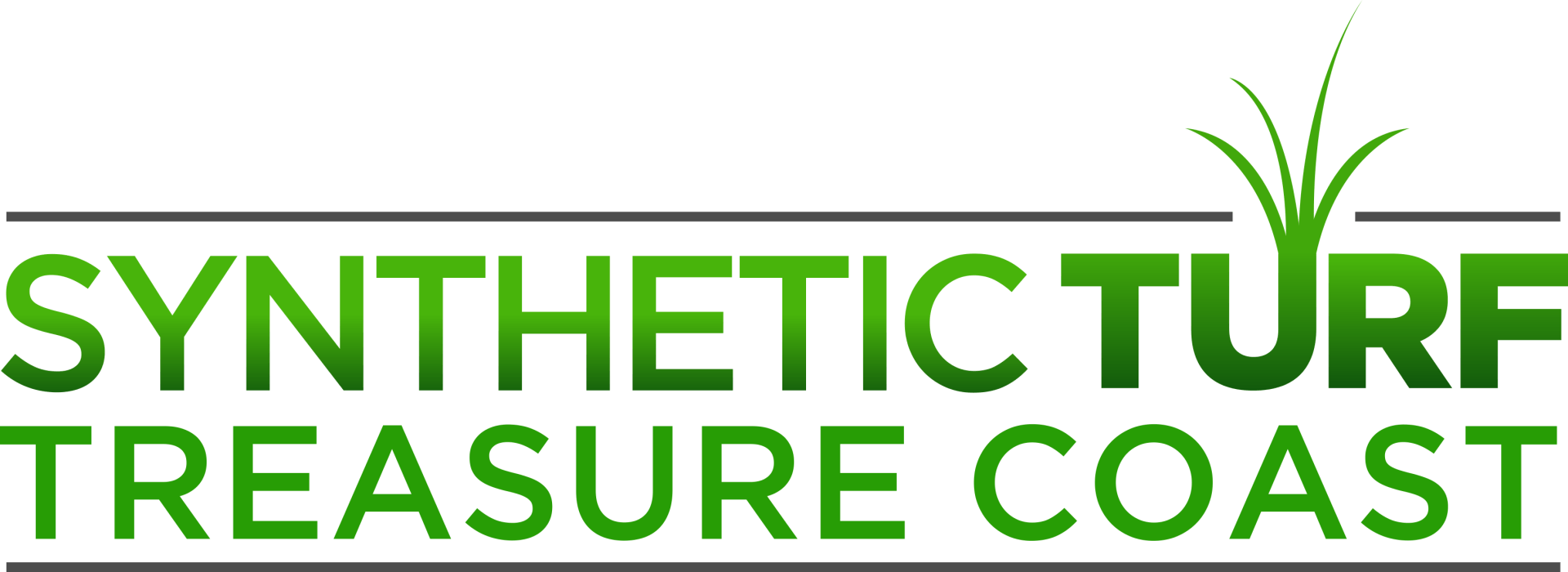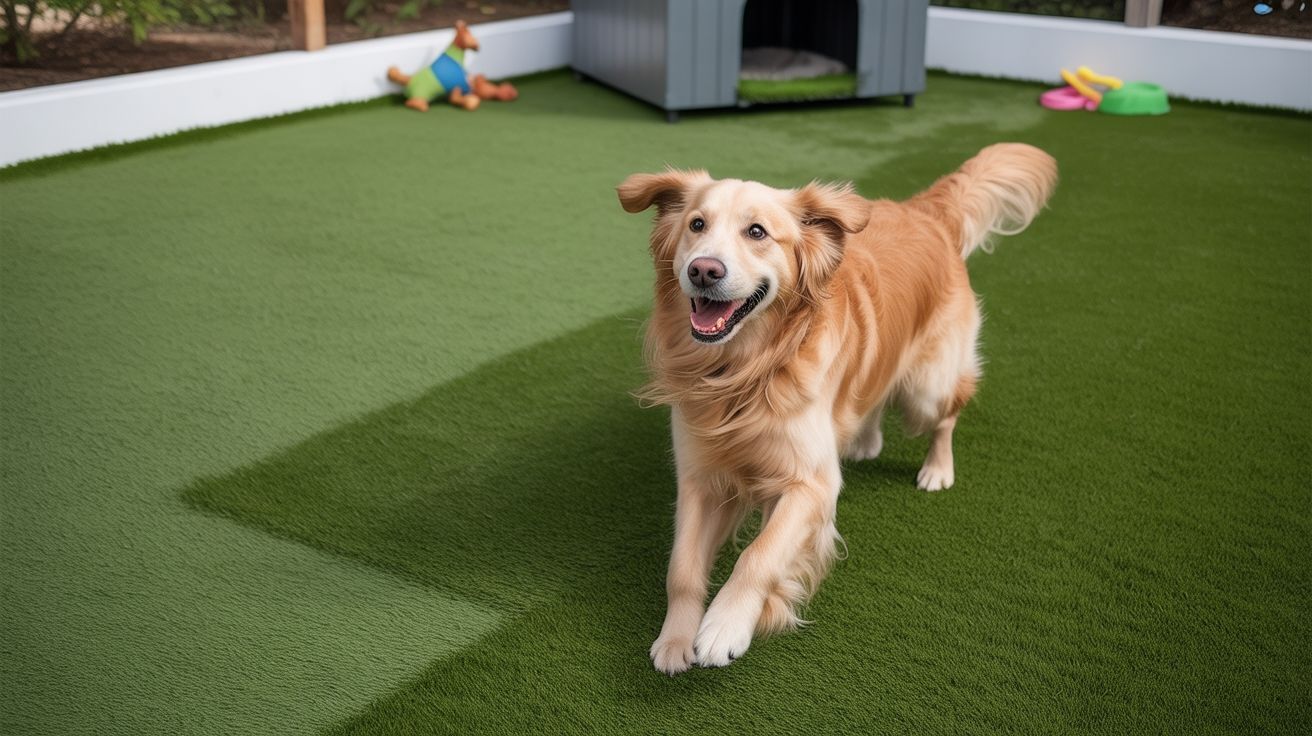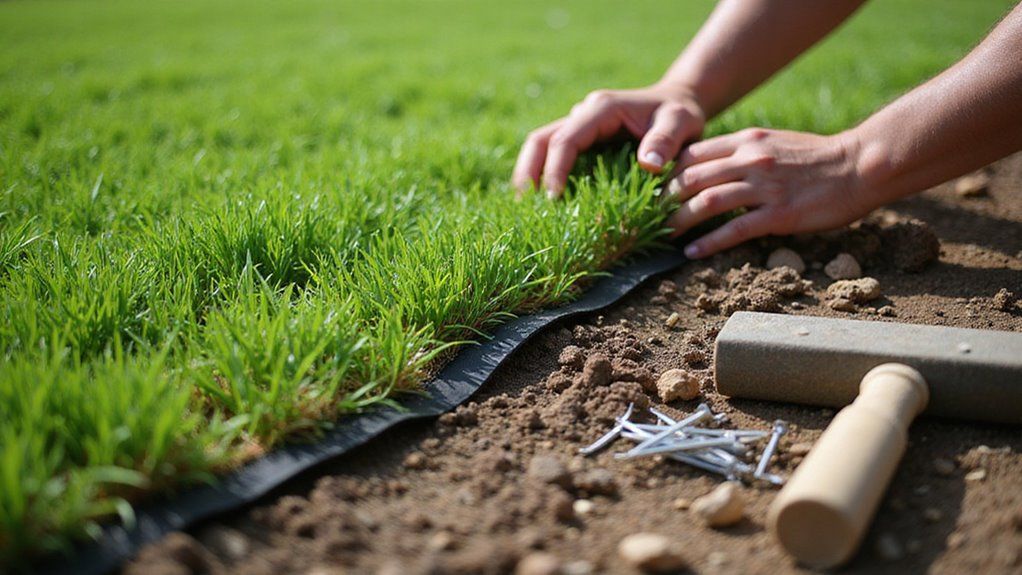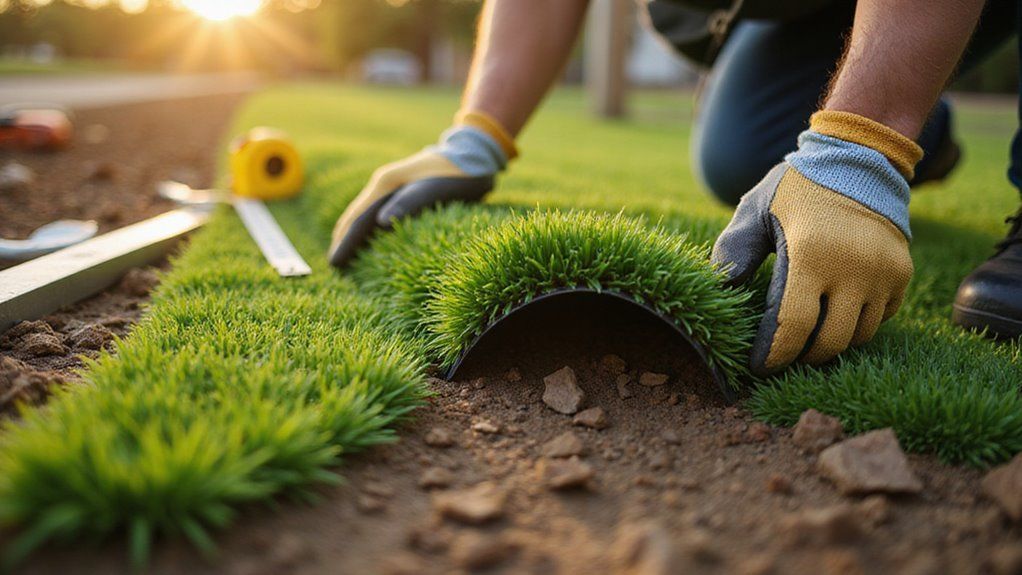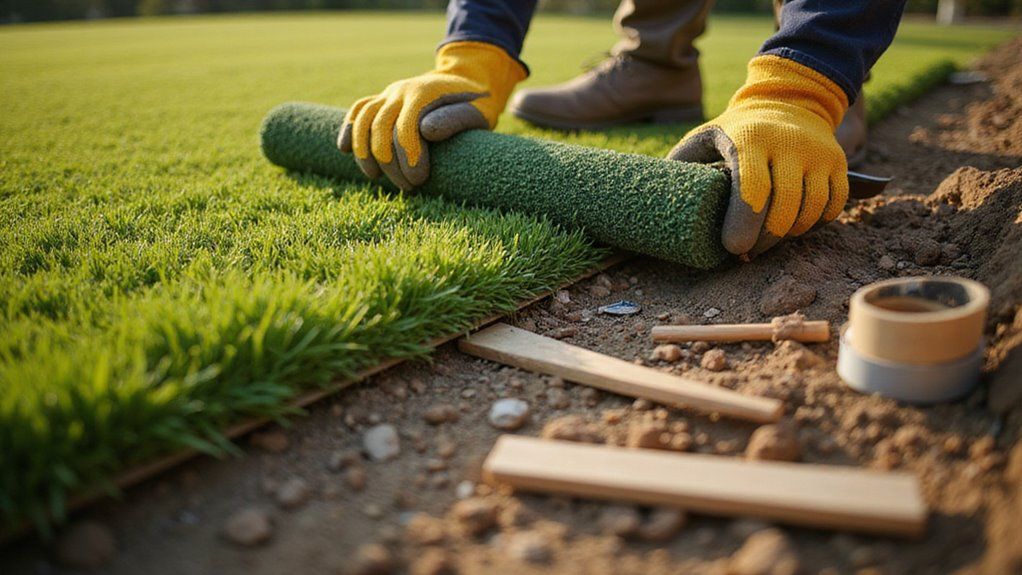Do You Have to Put Anything Under Artificial Grass?
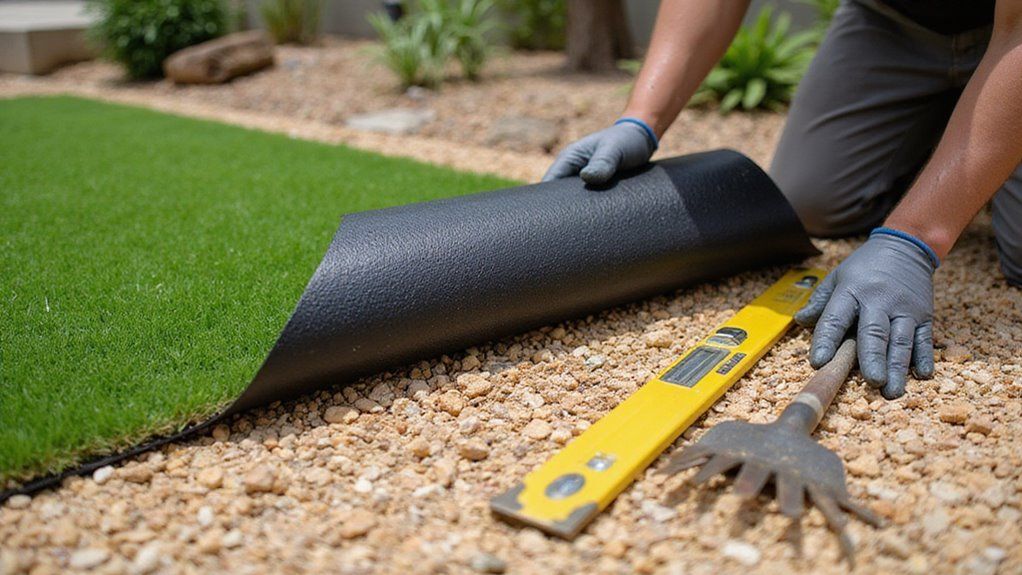
Installing artificial grass seems simple, but many people forget about the layer beneath. Without a proper base, problems can appear. Uneven surfaces, poor drainage, and turf damage often result from skipping this step.
Over time, you may notice dips, puddles, and even weeds growing through the turf. These issues can ruin your yard’s appearance and cost you more money. No one wants to redo the whole installation.
Yes, you do need to put something under artificial grass. A good underlayment helps with drainage, keeps the surface level, and extends your turf’s life. The right base protects your investment and ensures your lawn always looks great.
This blog will guide you through the best ways to prepare your ground for artificial grass.
Key Takeaways
- Yes, you must install a proper base layer (like compacted crushed stone) under artificial grass for stability and drainage.
- An underlay or base prevents turf movement, promotes water drainage, and extends the lifespan of artificial grass.
- Weed barrier fabric is often added beneath artificial turf to stop weeds from growing through the surface.
- Cushioning underlay (such as foam) can be used for extra comfort and safety, especially in play or pet areas.
- Skipping the correct underlay or base can lead to poor drainage, uneven surfaces, and a shorter turf lifespan.
The Purpose of Underlayment for Artificial Grass
Underlayment is the base layer for artificial grass. It supports the turf and helps it last longer. If you use good underlayment, your turf will perform better.
This layer makes the ground smooth and even. It also helps water drain away, so puddles do not form under the grass.
Underlayment stops the turf from moving or getting wrinkles. Choosing the right underlayment is especially important for areas with marshland and woodland areas, as it helps manage moisture and supports the longevity of the installation.
Some underlays add extra cushioning for comfort. If you install turf in play or sports areas, you may need shock-absorbing pads. Choosing the right underlayment keeps your artificial grass looking good and working well.
Depending on your needs, special underlays such as foam safety pads made from recycled materials can add extra protection and meet important safety guidelines for playgrounds or pet areas.
Common Problems Without a Proper Base
A proper base is needed for artificial grass to work well. Without it, you will have problems like uneven ground and bad drainage. These issues can make your lawn unsafe and look unattractive. Incorporating a solid foundation helps ensure field consistency for reliable performance.
An uneven surface can cause people to trip and hurt themselves. Water may pool if the base does not drain well, leading to mold and slippery spots. Poor drainage also affects the environment around your lawn.
If the base is missing, weeds can grow up through the turf. Weeds may damage the artificial grass and create ugly patches. Premature wear is another risk, causing higher costs and more frequent repairs.
A strong base under your turf prevents these common problems. It helps keep your lawn safe, neat, and long-lasting. If you want a low-maintenance and attractive lawn, always use a proper base.
Just as diverse ecosystems support healthy environments in nature, using the right materials under artificial grass ensures durability and proper function for your lawn.
Types of Materials Used Under Synthetic Turf
Artificial grass needs a strong and stable base to work well and last long. Most people use compacted crushed stone or decomposed granite.
These materials keep the turf level and stop bumps from forming. Learning about local ecosystem conservation can also inspire you to use earth-friendly practices for your turf installation.
A foam underlay can be added for more comfort and to absorb shock. This is helpful in play areas or places for pets. If you want extra safety, use foam underlay under the turf.
Weed barrier fabric is often placed below the base materials. This fabric stops weeds from growing up into your artificial grass. If you want low maintenance, always use a weed barrier.
Each layer has a special job, like support, comfort, or weed control. If you choose the right materials, your turf will look good and last longer. Always follow these steps for the best results.
For outdoor spaces in Vero Beach, FL, using effective drainage materials under artificial turf is especially important to handle heavy rain and ensure your yard stays beautiful year-round.
Importance of Drainage Layers
You need an effective drainage layer beneath your artificial grass to prevent water accumulation that can lead to surface flooding and turf damage.
Proper drainage systems, such as aggregate sub-bases or specialized mats, also improve surface stability by reducing the risk of shifting or uneven settling. Without this critical component, you’ll compromise both the durability and performance of your synthetic turf installation.
Features like long-lasting durability are directly impacted by the quality of the underlying drainage, which helps your artificial turf installation resist wear and maintain its appearance over many years.
Much like the pristine habitats at Hobe Sound Nature Center support healthy ecosystems, a proper drainage layer ensures your artificial turf remains functional and resilient.
Preventing Water Accumulation
To prevent water accumulation, you need good drainage when installing artificial grass. A drainage base lets water flow away from the turf. This keeps your yard dry and prevents puddles.
If you skip the drainage layer, water can pool and cause mold or bad smells. A compacted layer of crushed rock or gravel usually works best. Proper drainage also helps your artificial grass last longer.
Permeable materials under the turf help water soak into the ground. These materials can reduce runoff and support groundwater recharge. You should slope the sub-base away from buildings to guide water flow.
A high-quality geotextile membrane can boost drainage even more. This layer keeps your turf looking good in any weather. If you follow these steps, your artificial grass will stay functional and attractive.
Enhancing Surface Stability
A strong base is needed for stable artificial grass. If the base is weak, the surface may shift or sink. A good drainage layer helps keep the surface even and stable.
Soil should be compacted before laying turf. If the soil is not compacted, the ground may become uneven. Surface leveling is also important for a smooth finish.
A drainage layer, usually made of crushed stone, lets water pass through easily. If water cannot drain, the surface may become soft or muddy. A geotextile membrane can be used to keep soil and base material separate.
The sub-base must be compacted for steady support. If you use permeable gravel, water will drain away quickly. Grading the surface removes bumps and dips for a flat appearance.
Role of Weed Barriers in Artificial Grass Installation
A weed barrier is important when installing artificial grass. It stops weeds from growing up through the turf. This keeps your lawn looking neat and clean.
A weed barrier prevents unwanted growth beneath artificial grass, ensuring your lawn stays neat, tidy, and free from invasive weeds.
You should use a good, breathable geotextile membrane under the artificial grass. This layer blocks weeds but allows water to drain. If water cannot drain, it may cause puddles and damage the lawn.
Just as pristine beaches at natural preserves remain unspoiled, using a weed barrier helps maintain the cleanliness and longevity of your artificial lawn.
Choose a weed barrier that does not block rainwater. This helps the artificial grass last longer. It also keeps the ground healthy.
If you use a weed barrier, you do not need chemical weed killers. This reduces pollution in the soil. Proper weed barrier placement is a common practice for a tidy and durable lawn.
Installing a weed barrier is a key step that supports effective draining and helps your artificial turf stay beautiful and low-maintenance for years to come.
Using Crushed Stone or Gravel as a Base
Crushed stone or gravel creates a strong base for artificial grass. This base helps with drainage and keeps the surface even. It also supports the turf and makes it last longer.
When you use a high-quality base material, you enable efficient drainage so rainwater can run freely, minimizing risks of flooding or pooling.
If you use angular stones like decomposed granite, the pieces lock together when compacted. A well-packed base stops the ground from shifting or settling unevenly. It keeps your artificial grass smooth over time.
Start by spreading a 2–4 inch layer of crushed stone or gravel over the area. You should use a plate compactor to make the surface firm and level. Always check the grade and slope so water moves away from buildings.
Rake the base to make sure it is even everywhere. This step gives uniform support to the turf. If you build the base well, your artificial grass will stay attractive and stable.
Choosing the right types of bases for synthetic grass can improve durability, drainage, and long-term performance of your installation.
Foam Pads and Shock Absorption Benefits
Foam pads help artificial grass absorb shock and provide extra safety. They are important for areas where comfort and injury prevention matter. Playgrounds, sports fields, and gardens benefit most from this added cushioning.
Manufacturers use closed-cell polyethylene or polyurethane to make these pads. The foam layer reduces injury risk by softening falls and impacts. If safety standards like HIC ratings matter, foam pads are a good choice.
Install foam pads over the base layer before adding artificial grass. Thicker pads work best for play areas, while thinner ones suit home lawns. This layer also protects the ground underneath and helps the grass last longer.
In poolside installations, a foam pad can help address safety and slippage issues, especially in wet areas where falls are more likely.
Preventing Uneven Surfaces and Sinkage
Uneven surfaces and sinkage often happen if the ground under artificial grass is not prepared well. A strong, compact base keeps your lawn even and prevents problems later. Good groundwork saves you from expensive repairs.
Crushed granite or limestone creates a firm base and helps water drain away. It's important to ensure proper drainage slope as part of your base preparation to avoid water accumulation under the turf. A weed membrane stops plants from growing under the grass and keeps the surface smooth. Adding a layer of sand on top helps level the area and supports the turf.
Mechanical compaction presses everything down and makes the base stable. If you follow these steps, your artificial lawn will stay flat and look neat.
Skipping any step could lead to dips and soft spots in the future. Using root barriers when installing artificial grass near trees can also help protect tree roots from potential harm and maintain overall landscape health.
Addressing Pet Odors and Hygiene
Artificial grass can still develop pet odors if not managed well. Good hygiene depends on picking the right underlay materials. If you use a permeable underlay, it allows water to drain and avoids moisture buildup.
Proper underlay is key—permeable materials help water drain, preventing moisture buildup and keeping pet odors at bay.
You should choose antimicrobial infills and odor-neutralizing additives to help reduce smells and bacteria. Crushed granite drains well and limits bacteria. Zeolite infill absorbs ammonia odors and has natural antimicrobial properties.
Rubber shock pads offer cushioning but can trap scents and are less sanitary. Silica sand provides only basic filtration and little odor control. Drainage grids dry quickly and stop moisture from becoming stagnant.
If you want a clean, odor-free lawn, combine the best options for drainage and odor control. Proper selection makes maintenance easy and keeps your yard fresh.
Steps for Preparing the Ground
Proper ground preparation is essential before installing artificial grass. Good preparation helps the grass last longer and look better. If you skip these steps, the installation may fail.
Start by removing all natural grass, weeds, and debris from the area. This prevents unwanted growth under your artificial grass. If the ground is not clear, bumps and uneven spots may form.
Excavate the soil to a depth of 2 to 3 inches. Grading the soil is important for drainage, so always create a slight slope. If water does not drain, the area can become soggy.
A crushed stone or granite dust sub-base should be spread and compacted. Use a plate compactor to make the base solid. If the foundation is unstable, the surface will shift.
Install a weed barrier membrane as the final step. This layer stops weeds from growing through the artificial grass. If you follow these steps, your installation will be smooth and lasting.
Cost Considerations for Base Materials
Base materials are important because they support your artificial grass. Quality and cost are both key factors when choosing them. If you pick the right base, your turf will last longer and look better.
Choosing quality base materials ensures your artificial grass lasts longer and looks its best for years to come.
You should check the type and amount of material needed, such as crushed granite or limestone. These materials affect drainage and strength. Picking only the cheapest option can lead to problems later.
If your project needs it, add costs for delivery, equipment rental, and geotextile fabric. High-quality base materials may cost more upfront. However, they help prevent future repairs and surface issues.
Always compare prices from local suppliers before buying. If you buy in bulk, you might get a discount. Investing in good materials will save you money over time.
Mistakes to Avoid When Laying the Foundation
Laying a good foundation is key for artificial grass. Mistakes during this step can cause drainage and stability issues. If you want a long-lasting lawn, avoid common errors.
Not digging out enough soil can leave the ground bumpy and cause water to pool. Skipping a weed barrier allows weeds to grow through the turf. Using the wrong sub-base material may stop water from flowing properly.
Rushing the compaction process can leave air pockets under the turf. These pockets can later cause dips or tripping risks. Good foundation work ensures your turf stays neat and safe for years.
Maintenance Tips for Areas With Underlayment
Artificial grass underlay makes maintenance easier than natural grass. However, proper care is still important for good results. Regular upkeep helps your artificial lawn last longer.
Use a stiff broom to brush the grass fibers often. This keeps them upright and looking neat. Inspect the surface for uneven spots, especially where people walk often.
Remove leaves and other debris right away. If debris stays, it can trap moisture and cause mold under the grass. Rinse the turf sometimes to wash away dust and dirt.
If you see water pooling, check the drainage and underlay for clogs. Clearing blockages helps prevent damage and keeps the area dry. Following these steps protects both your underlay and your artificial grass.
Comparing DIY and Professional Installations
When choosing between DIY and professional installation for artificial grass underlay, consider the skills and tools needed for each option. DIY can cut costs, but you must understand sub-base preparation, drainage, and joining seams.
Professionals have specialized tools and follow best practices for better results.
A professional installation often creates a level, compact base. Turf seams look seamless, and infill is spread evenly. Edges stay neat and secure, unlike DIY attempts, which may shift or look uneven.
If you want your artificial turf to look its best and last longer, professional installation is usually the better choice.
Conclusion
If you want a successful artificial grass installation, you must prepare a strong base. A proper sub-base helps your turf last longer and stay even. If you skip this step, your lawn may develop bumps or drainage problems.
If you use crushed stone, drainage layers, and weed barriers, your artificial grass will stay in good condition. These materials prevent weeds and help water drain properly. If you do not use them, you might face costly repairs later.
If you are ready to install artificial grass, consider working with experts. Install your artificial grass with Synthetic Turf Treasure Coast for a long-lasting and professional result. Their team will help you create a beautiful and durable lawn.
About the author
Kathy Leavell
Kathy Leavell is the founder and owner of Synthetic Turf Treasure Coast, a leading provider of synthetic grass solutions for residential and commercial properties in Florida. With over a decade of experience in the industry, Kathy has become a recognized expert in synthetic turf installation, maintenance, and repair. Under her leadership, Synthetic Turf Treasure Coast has earned a reputation for exceptional customer service and high-quality workmanship.
Prior to starting her own business, Kathy worked in sales and marketing roles at several major synthetic turf manufacturers.
